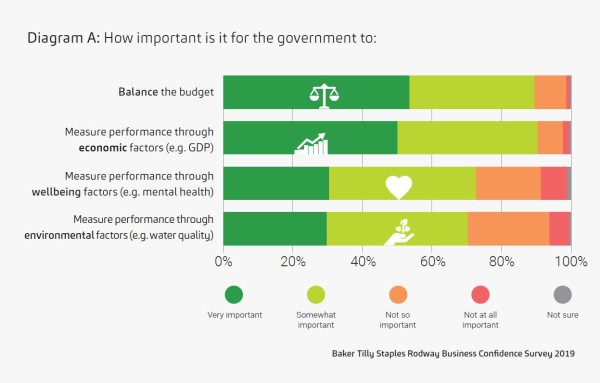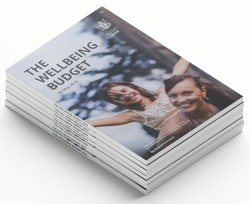Pathways to the APAC Capital Markets – the complete 2025 guide
Are you planning your next move into Asia Pacific’s capital markets? The guide below is your starting...
New Zealand’s recent 2019 Budget was the first produced using the Government’s new ‘Wellbeing concept’, a ground-breaking approach based on the Treasury’s Living Standards Framework (LSF). Why is this groundbreaking? It has never been done before!
Time to read: 6 mins
No other government in the world has prepared a budget based upon publicly stated wellbeing outcomes, one that claims to gauge the long-term impact of policy on the quality of people’s lives. No easy task!
New Zealand has a proud history of breaking new ground in the financial reporting arena, being the first country in the world to produce accrual-based government financial statements and the first to introduce non-financial reporting at a government (and also registered charity) level. Feedback from the recent introduction of performance reporting requirements for registered charities suggests that people value being able to access information about an organisation that is broader than outlining how they have spent their funds and how much is left. Almost 30 years since the introduction of the Public Finance Act, New Zealand continues to take significant strides in advancing governmental transparency and accountability with the introduction of the LSF and development of the Wellbeing Budget.
While it has long been recognised that measuring success based on dollars and cents alone (i.e. GDP) doesn’t cut it, no other government has gone this far.
In 2014, Chartered Accountants ANZ released a paper advising that: We need to start understanding how we are performing in a broader societal wellbeing perspective in order to create the policies for long term prosperity for all.
Even earlier, in the late 1960s, Robert F Kennedy recognised the importance of broader measurement. It is hard to imagine an American politician these days giving this sort of speech, but that does not diminish its power: Yet the Gross National Product does not allow for the health of our children, the quality of their education or the joy of their play. It does not include the beauty of our poetry or the strength of our marriages, the intelligence of our public debate or the integrity of our public officials. It measures neither our wit nor our courage, neither our wisdom nor our learning, neither our compassion nor our devotion to our country, it measures everything, in short, except that which makes life worthwhile.
And business owners agree. In our recent Business Confidence Survey, 72% of respondents considered it was important to measure performance through wellbeing factor (see Diagram A).

So, what has stopped other countries from progressing further in developing alternative success measures? Are there solid reasons for sticking with the status quo and measuring success using more traditional measures? You may also ask what governments role is in relation to the wellbeing of its citizens that would be a fair question.
A number of countries and jurisdictions have progressed development of ‘GDP alternatives’. Examples include:
In terms of reporting success in the wellbeing arena, since 2007, the US has published State of American Well-Being rankings, to highlight which states are performing well across five key elements of wellbeing:
Purpose: liking what you do each day and being motivated to achieve your goals
Social: having supportive relationships and love in your life
Financial: managing your economic life to reduce stress and increase security
Community: liking where you live, feeling safe, and having pride in your community
Physical: having good health and enough energy to get things done daily
The 2017 rankings report highlighted that wellbeing in the US was in a state of steady decline, and that investing in the wellbeing of others is more critical now, than ever before. The report also noted that wellbeing goes beyond the individual and is impacted by outside forces which supports the notion that wellbeing is best measured, and managed, at a national level.
No. As we discovered on 30 May, the Coalition government considers that paving the way towards broader measures of national success is a worthwhile endeavour, despite the challenges. The world is certainly watching us, with the announcement of our Wellbeing Budget drawing much attention at the World Economic Forum at Davos earlier this year.
Whether this approach is as transformational as is claimed is yet to be seen. While it is difficult to argue against reducing child poverty and youth suicide rates, the business community and society at large hold high expectations for tangible results to support these claims. Can the Wellbeing Budget deliver these results? Time will tell.

Boosting innovation
Creating opportunities for productive businesses, regions, iwi and others to transition to a sustainable and low-emissions economy.
Creating opportunities
Supporting a thriving nation in the digital age through innovation, social and economic opportunities.
Backing MÄori & Pasifika
Lifting MÄori and Pacific incomes, skills and opportunities.
Supporting mental health
Supporting mental wellbeing for all New Zealanders, with a particular focus on under 24-year-olds.
Improving child wellbeing
Reducing child poverty and improving child wellbeing, including addressing family violence.
Our website uses cookies to help understand and improve your experience. Please let us know if that’s okay by you.
Cookies help us understand how you use our website, so we can serve up the right information here and in our other marketing.